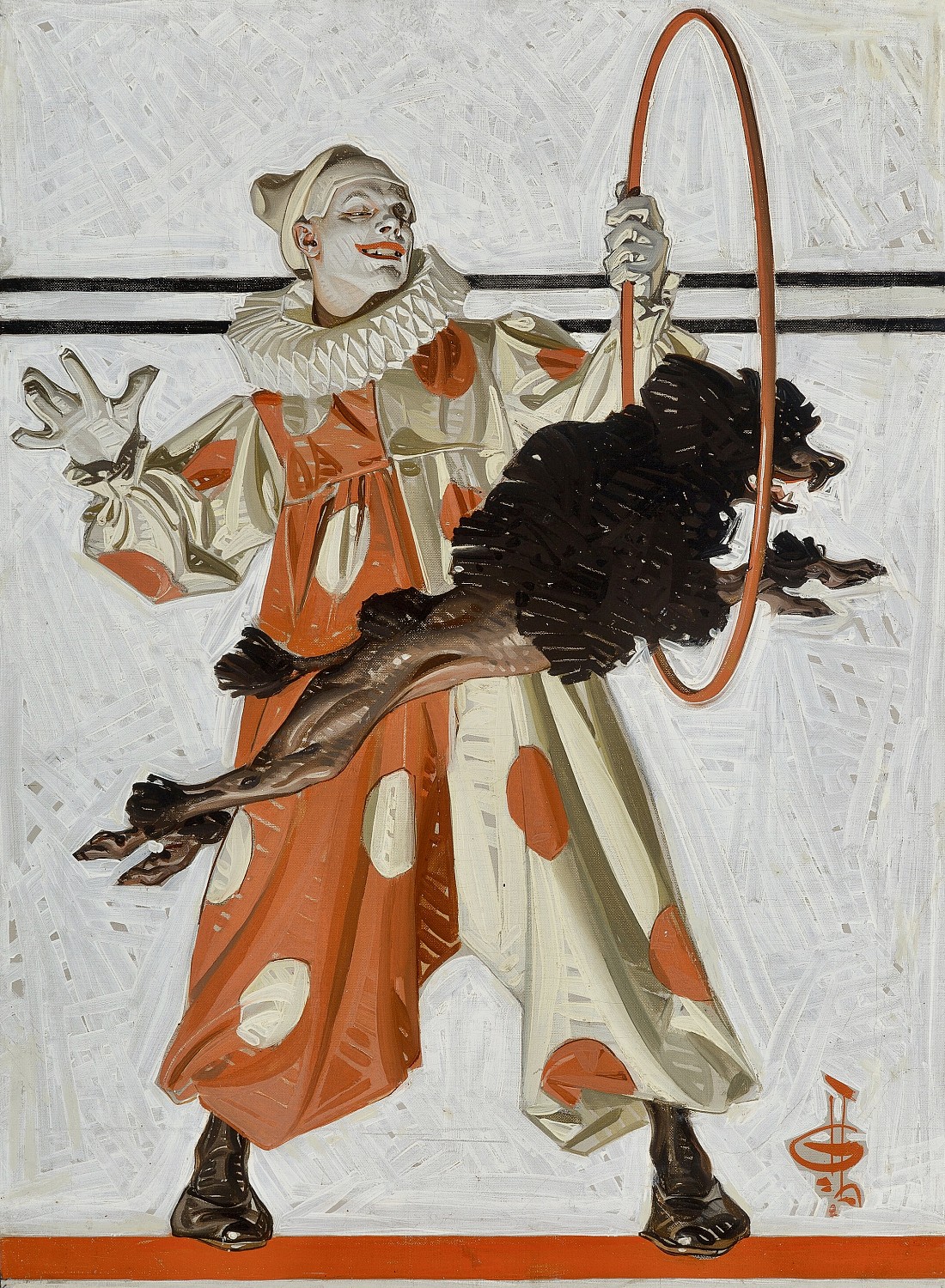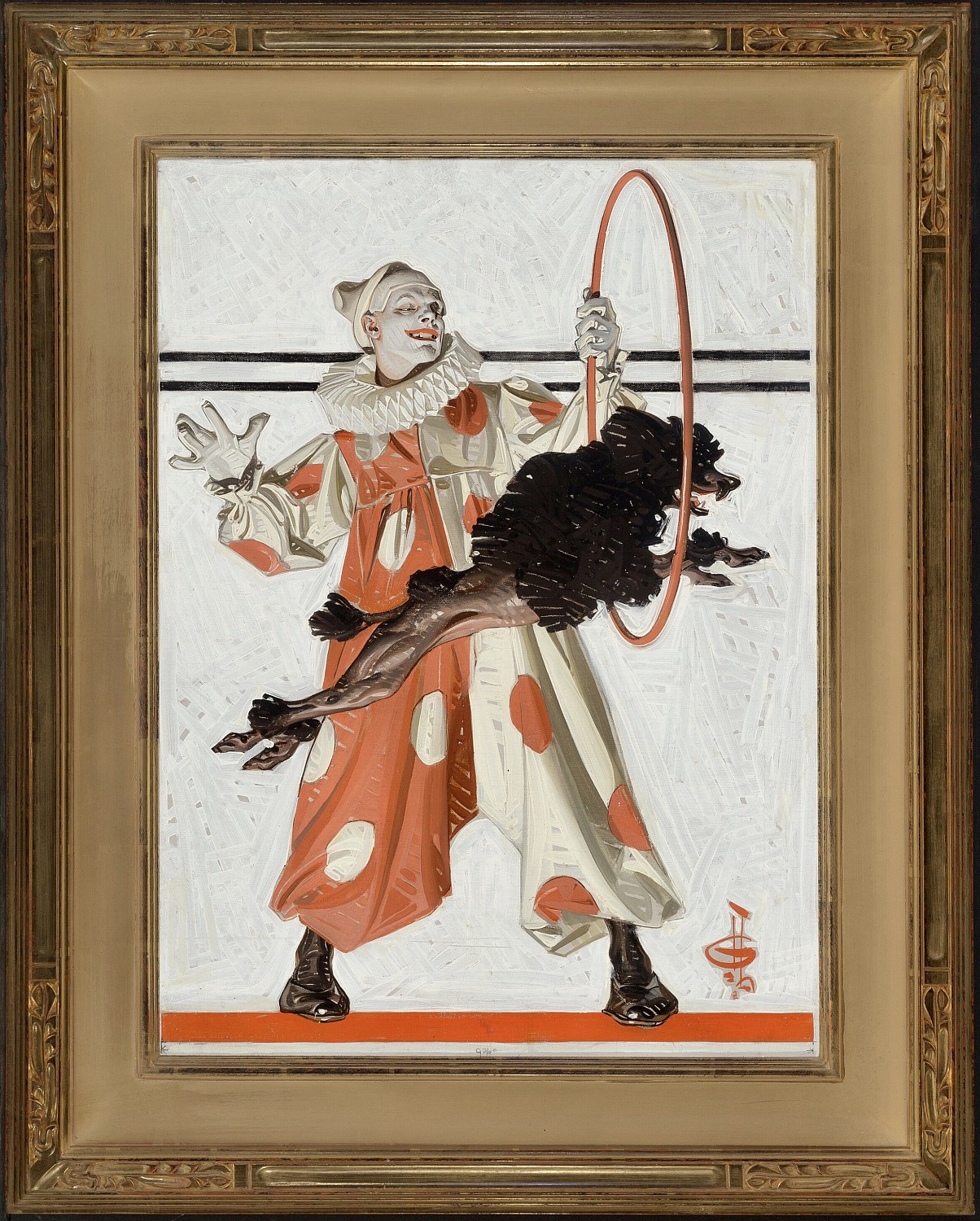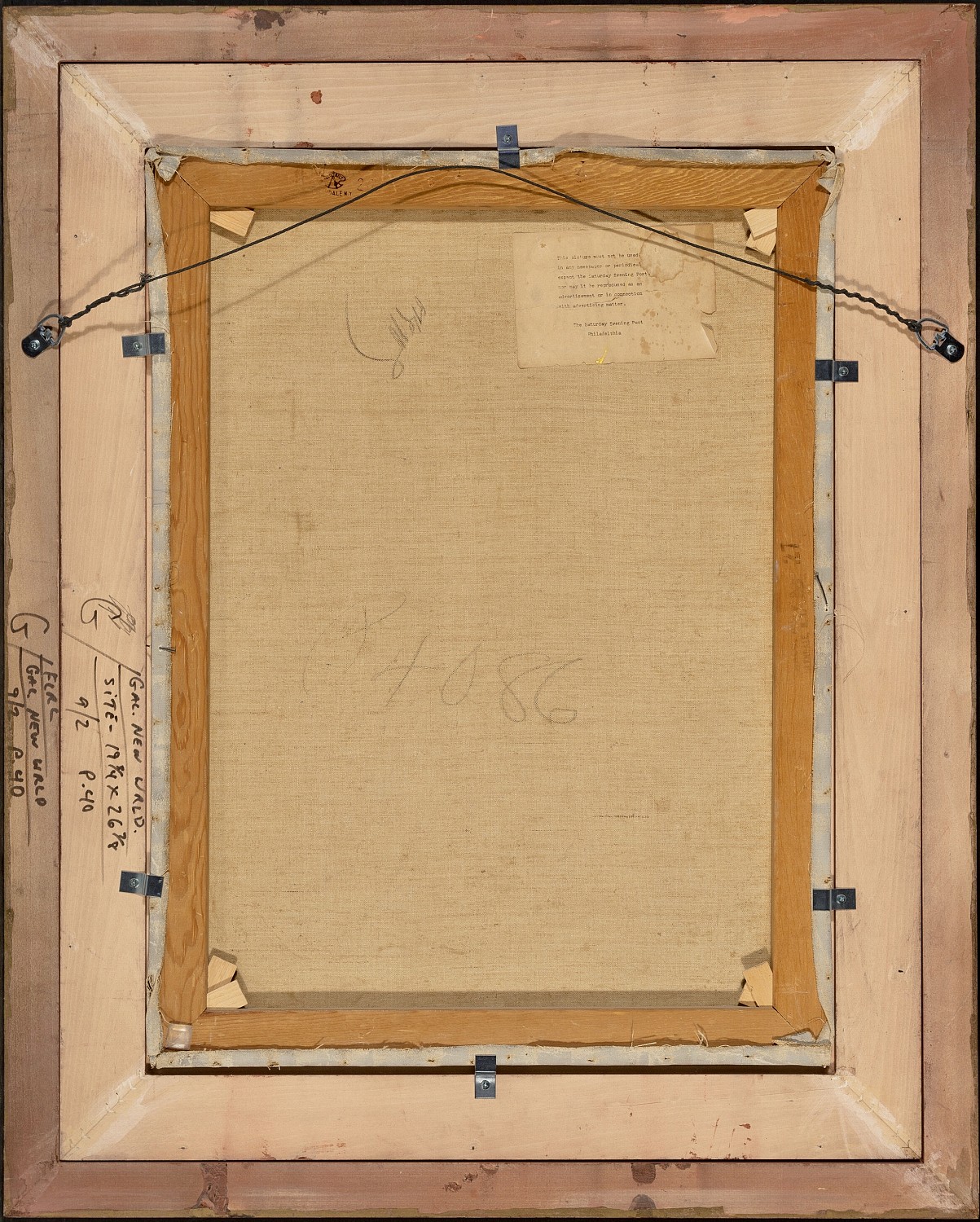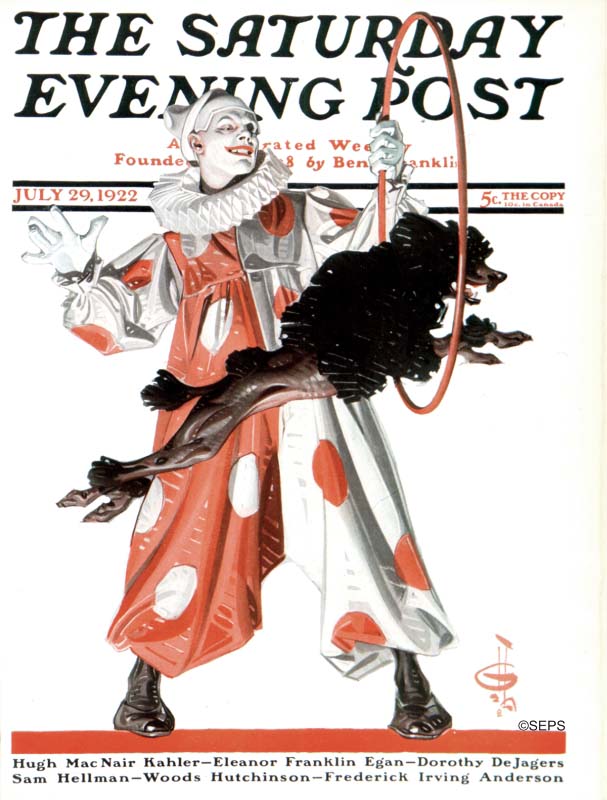"Circus Dog, The Saturday Evening Post cover" Lot no. 4395
By Joseph Christian Leyendecker (1874-1951)
1922
27" x 20"
Oil on Canvas
Signed Lower Right
REQUEST PRICE
PURCHASE REQUEST
The Saturday Evening Post cover, July 29, 1922
This commission for The Saturday Evening Post is a brilliant example of Joseph Christian Leyendecker's technical prowess and the qualities that make him one of illustration's biggest names. The composition immediately registers with the eye: The stance of the clown effectively fills the composition, while remaining dynamic. The naturalistic pose of the poodle creates a sense of motion. This sense of action is accentuated further by the unseen stage lighting, illuminating the figure from below, conveying a sense of scale and drama. At the time, The Saturday Evening Post covers were not yet using full-color printing technology, therefore Leyendecker is working with a limited palette of reds, whites, and blacks. The artist deftly utilizes a primary palette to guide the eye across the composition with an illusion of rhythm. All these qualities combine to create a stunning image with great impact, perfectly crafted to attract the eye and draw in customers, exemplary of Leyendecker's mastery of communicative illustration.
Explore related art collections: Saturday Evening Post Covers / Magazine Covers / $100,000 & Above / 1920s / Circus / Dogs & Cats / Humor
See all original artwork by Joseph Christian Leyendecker
ABOUT THE ARTIST
Joseph Christian Leyendecker was born in Montabaur, Germany, and came to America at the age of eight. Showing an early interest in painting, he got his first job at 16 in a Chicago engraving house on the strength of some larger pictures he had painted on kitchen oilcloth. In the evenings after work, he studied under Vanderpoel at the Chicago Art Institute, and saved for five years to be able to go to France and attend the Academie Julian in Paris.
Upon his return, as a thoroughly trained artist with immense technical facility, Leyendecker had no difficulty in obtaining top commissions for advertising illustrations and cover designs for the leading publications. His first Post cover was done in 1899, and he did well over 300 more during the next 40 years. Among the most famous of these was his annual New Years Baby series.
His advertising illustrations made his clients famous. The Arrow Collar Man was a byword for the debonair, handsome male, and women wrote thousands of love letters to him in care of Cluett Peabody & Company. His illustrations for Kuppenheimer Clothes were equally successful in promoting an image of suited elegance. He was elected to the Society of Illustrators Hall of Fame in 1977.A major retrospective exhibition of Leyendecker's work was mounted at the Norman Rockwell Museum in Stockbridge, Massachusetts, in 1997-98.
Joseph Christian Leyendecker was born in Montabaur, Germany, and came to America at the age of eight. Showing an early interest in painting, he got his first job at 16 in a Chicago engraving house on the strength of some larger pictures he had painted on kitchen oilcloth. In the evenings after work, he studied under Vanderpoel at the Chicago Art Institute, and saved for five years to be able to go to France and attend the Academie Julian in Paris.
Upon his return, as a thoroughly trained artist with immense technical facility, Leyendecker had no difficulty in obtaining top commissions for advertising illustrations and cover designs for the leading publications. His first Post cover was done in 1899, and he did well over 300 more during the next 40 years. Among the most famous of these was his annual New Years Baby series.
His advertising illustrations made his clients famous. The Arrow Collar Man was a byword for the debonair, handsome male, and women wrote thousands of love letters to him in care of Cluett Peabody & Company. His illustrations for Kuppenheimer Clothes were equally successful in promoting an image of suited elegance. He was elected to the Society of Illustrators Hall of Fame in 1977.A major retrospective exhibition of Leyendecker's work was mounted at the Norman Rockwell Museum in Stockbridge, Massachusetts, in 1997-98.
Kent Steine







